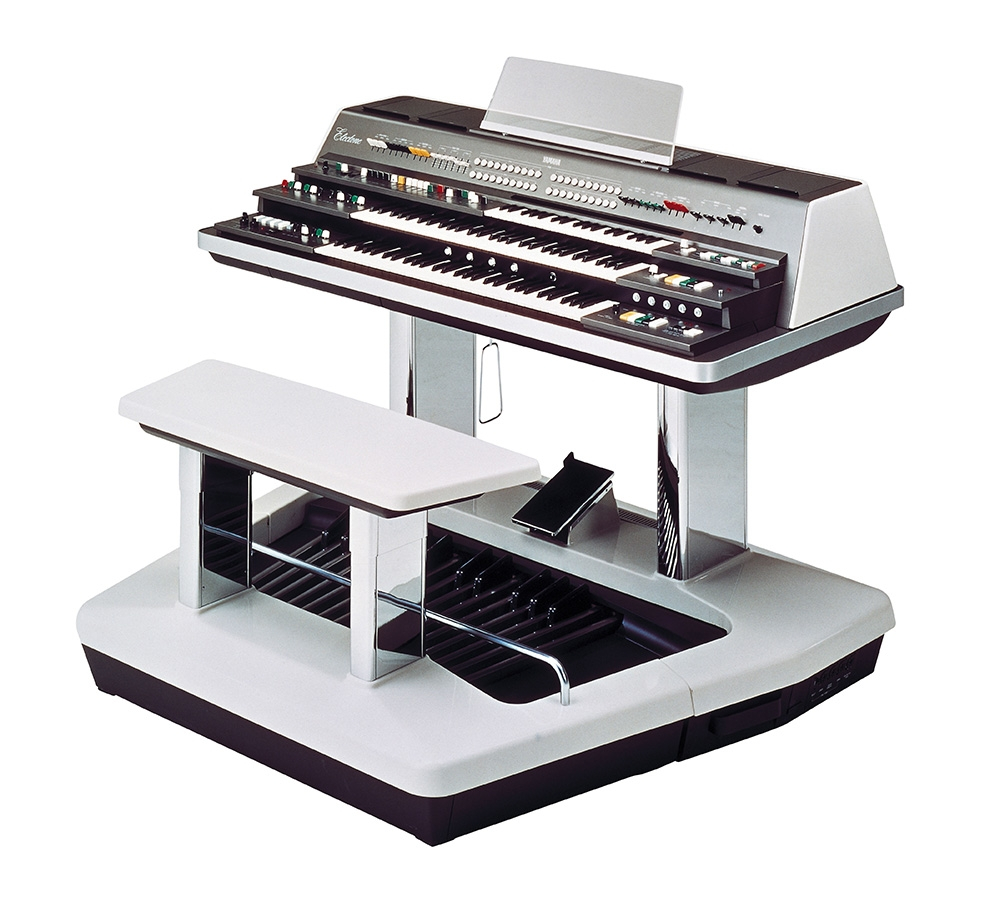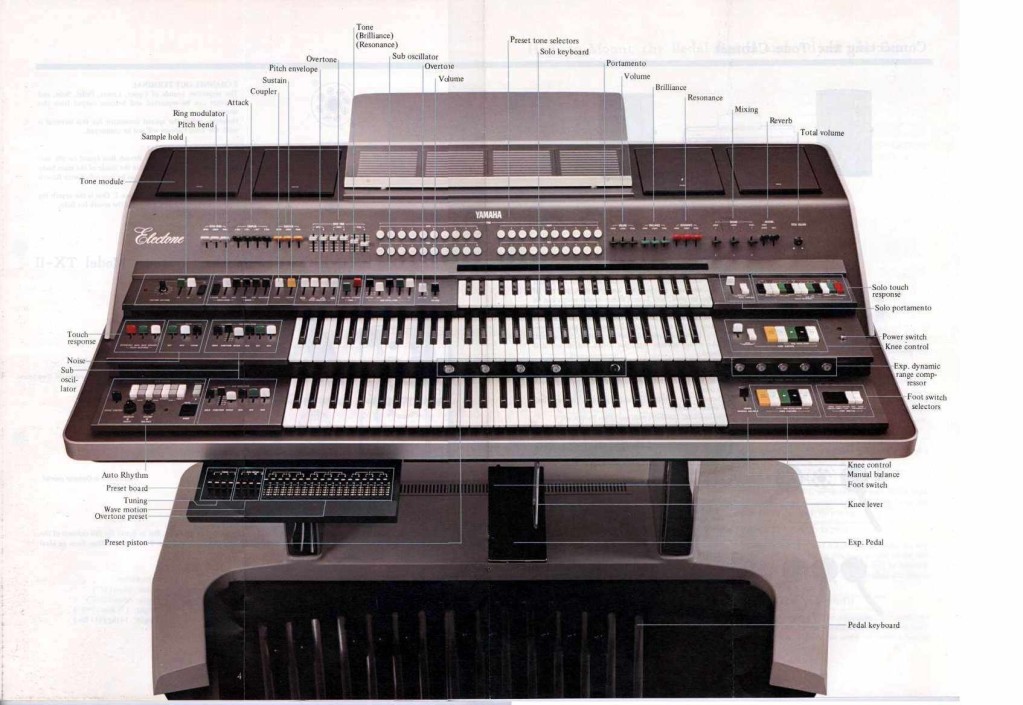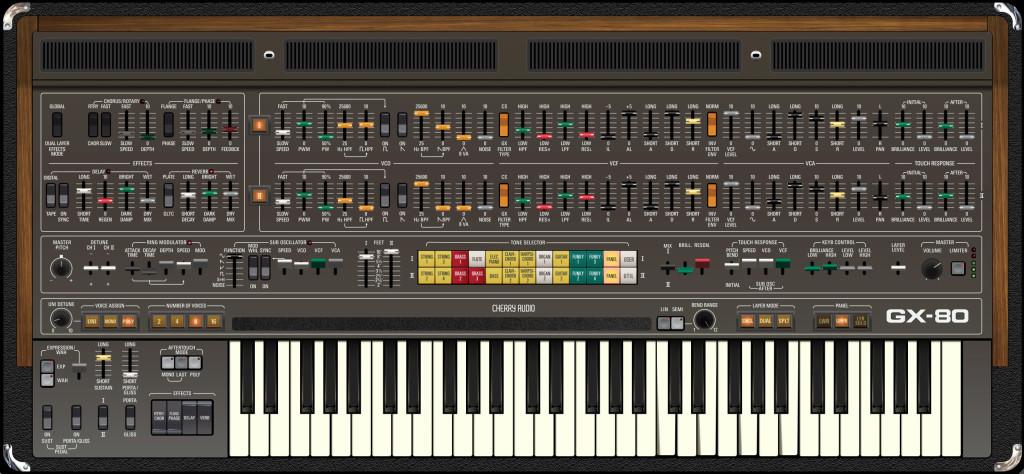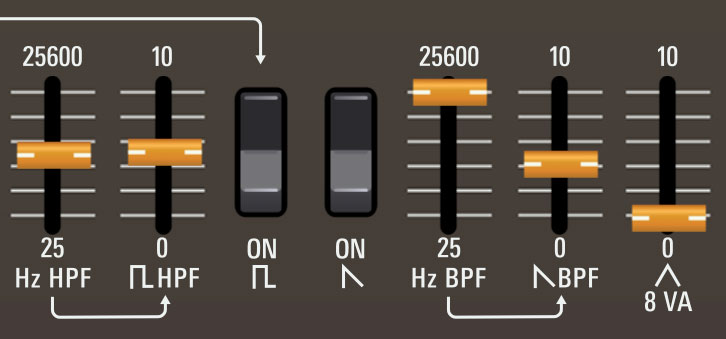CS-80 emulations have come and gone, but Cherry Audio dug into the ultra-rare “theatre model” Electone GX-707 organ (GX-1) – to give their model even more depth. It’s still a CS-80, though, so we’re still going to watch 1982 Doctor Who as a sound design tutorial.
The Yamaha CS-80 is the flagship 1977 Yamaha analog 8-voice poly, the one covered with brightly-colored faders and buttons. Of all the many synths that could be viewed as a bridge between the analog synth and the organ, this one is probably the first that pops to mind.


In Yamaha’s case, they really did have an organ as a testbed for their synthesizers, and that organ was the massive GX-1 (aka Electone GX-707). This thing was just a monster – three manuals and pedal and rhythm machine. It almost looks like someone stacked synths together. Accordingly, it was intended for theater installs and whole dozens were made. But it did pack specs like a modern soft synth, so it weirdly lends itself to software emulation if you think about it … or if you don’t think about it too hard.
Yamaha GX-1 [Yamaha official site]
In mashing up the CS-80 with the GX-1 that inspired it, Cherry Audio have beefed up the CS in a few interesting ways. Meet the Cherry Audio GX-80:

- Highpassed resonant pulse and bandpassed sawtooth wave and octave-up triangle wave as additional sources
- Filter envelope inversion option
- GX-1 filter option (in addition to the CS – on each voice, so you can mix and match and go wild)
- Dual-layer voice architecture (16 poly voices per layer – like having two CS-80s)
They’ve also added split keyboard mode and simulated polyphonic aftertouch.

Despite its ultra-rare status, the GX-1 did have some special owners:
- Stevie Wonder (who called it the “Dream Machine”) on Songs in the Key of Life, Journey Through The Secret Life of Plants
- Benny Andersson of ABBA
- Hans Zimmer
- Keith Emerson
- Paul Davis
- John Paul Jones of Led Zeppellin on In Through The Out Door
- Venezuelan organist and pianist Tulio Enrique León
Anyway, you don’t really have to think too much about this – the fact that this was all derived from the GX-1 is interesting historically, but you can also just say “mega-CS-80”! That’s what you get – a CS-80 with doubled-up specs and extra sound options and a unique filter option.
Mark Barton again did the DSP work. And there was a lot to this, as Cherry tells CDM:
Honestly, this was the most difficult instrument we’ve modeled so far, because it’s so much more complex than it appears from the panel (which is already not all that simple!). Because of its extensive performance controls, the high- and low-pass filters are often simultaneously being modded by the filter envelopes, velocity, aftertouch, keyboard position, the Brilliance and Resonance performance paddles, and possibly the fixed and performance control LFO amounts, etc. And as you might imagine, there are all kinds of “built-in” linear and not-so-linear offsets to keep these within musically sensible ranges… and that’s just the filter stuff. Almost everything about it is uniquely implemented somehow, down the to the way the sustain pedal works.
They’ve added some other sensible additions:
- Sync for LFO and effects
- Multi-effects including tape echo and Galactic reverb algorithm (go full Vangelis if you like)
- CS Tone Selector presets
- User mode for storing rank level presets
In other words, this is a nice combination of authentic CS-80, GX-1 extras and expanded architecture, and modern additions.
What I find admirable about the CS series was the clever way Yamaha made modulation hands-on and accessible. And the best way to learn how to do that is to watch a 1982 BBC making-of clip with Peter Howell remaking the Doctor Who theme. Sweeping the ring mod here is everything. And incredibly, 40 years after this video was made, it still sounds cool and futuristic. I’d say we’d get the same spontaneous grin and nod in the way the presenter here does. (BBC correctly credits the original theme to Delia Derbyshire – yes, technically Ron Grainer was the composer, but just sketched the melody. The features Howell is re-orchestrating here were all Derbyshire’s creations. But I digress.) An ARP Odyssey Mk3 does eventually get to play the tune, after making its first appearance as the world’s most expensive metronome. Also bonus points for clever use of vocoder. This really is my favorite version of this theme.
We were talking about something else here….
Oh, yeah, Cherry Audio’s GX-80!
Well, as it happens, I see that Robert Saint John who contributed to the project has the same obsessions I do – the paddle controls on the front of the CS, and the Peter Howell Doctor Who arrangement. So sure enough, he worked on onscreen animations for the paddles and made a Who preset.
But… let’s just do this anyway.
Enjoy:
Intro price $59, $79 thereafter
VST, AU, VST, VST3, AAX, standalone, Mac, Windows, M1
https://cherryaudio.com/products/gx-80